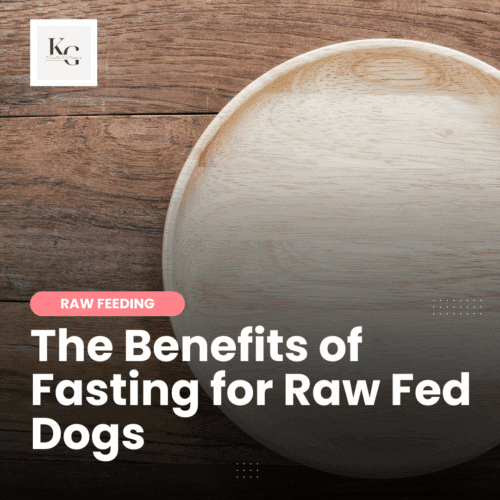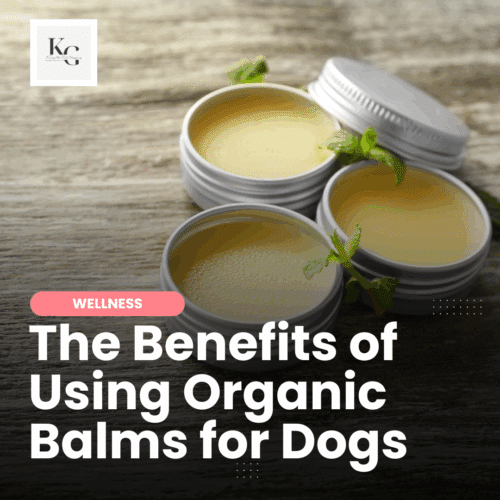Keep the Tail Wagging is supported by pet parents. I occasionally earn a commission (at no additional cost to you) when you click through an affiliate link to one of my favorite products. Thank you for your support. Read More
As more dog owners embrace homemade and raw food diets, the question of whether to include synthetic nutrients becomes unavoidable. While the allure of “whole food only” is strong, balancing a dog’s diet to meet complete nutritional needs sometimes means turning to synthetics — but is that a good or bad thing? Let’s explore the pros, cons, and key considerations of using synthetic nutrients in raw feeding.
Why a Balanced Diet Matters in Raw Feeding
To thrive, dogs require a precise balance of macronutrients (protein, fat, carbs) and micronutrients (vitamins, minerals, fatty acids, amino acids). While muscle meat, organs, and bones provide many essential nutrients, research shows that even the most carefully planned raw diets often fall short in certain areas, particularly:
- Vitamin E
- Manganese
- Iodine
- Zinc
- Copper
- Vitamin D
- Omega-3 fatty acids (EPA, DHA)
Nutritional deficiencies can lead to poor growth, skin and coat problems, immune dysfunction, reproductive failure, and organ damage without proper balance. I formulate recipes using Animal Diet Formulator software, using whole food ingredients and avoiding synthetic nutrients. After several years of using this software, I've learned that formulating diets for dogs isn't easy. Correcting a recipe that is low in manganese isn't as easy as Googling “foods rich in manganese.” Adding a handful of sunflower seeds may sound like a great idea, but other nutrients will be lowered or increased with each change. One reason someone might choose to use synthetic ingredients is to balance a recipe without the headache of adding and tweaking too many ingredients.
Let's explore more reasons why synthetic nutrients are used and alternatives.
Common Synthetic Nutrients Used in Homemade Raw Diets
These are the most popular and commonly added synthetic nutrients in DIY raw diets:
- Zinc (often zinc gluconate or zinc sulfate) – to support skin, coat, and immune health
- Vitamin E (dl-alpha-tocopherol) – a critical antioxidant often low in meat-heavy diets
- Manganese (manganese sulfate) – important for cartilage, bone health, and enzyme function
- Iodine (potassium iodide or kelp powder, though kelp is a natural source) – for thyroid function
- Vitamin D (cholecalciferol) – supports calcium balance and bone health
- Copper (copper sulfate or copper gluconate) – needed for red blood cell production and connective tissue
These synthetics are often used to meet National Research Council (NRC) nutrient guidelines or FEDIAF standards when whole food sources are insufficient or inconsistent.
Why Use Synthetic Nutrients in Homemade Diets?
Despite the ideal of feeding only whole foods, there are practical reasons many raw feeders include synthetic supplements:
- Inconsistent nutrient content in natural ingredients (for example, the iodine in kelp can vary dramatically)
- Limited access to certain organs or glands (like thyroid or spleen)
- Ensuring balance for puppies, pregnant dogs, or seniors, who have higher or more specific nutrient needs
- Correcting known deficiencies after bloodwork or health assessments
- Avoiding excessive feeding of certain foods to meet one nutrient target (e.g., feeding too much liver for vitamin A)
Health Risks of Heavy Reliance on Synthetic Nutrients
While synthetics are useful, overreliance comes with potential downsides:
- Nutrient imbalances or overdoses – Synthetic nutrients can be highly concentrated, and incorrect dosing may lead to toxicity, especially with fat-soluble vitamins (A, D, E, K) and minerals like zinc or copper.
- Poor bioavailability – Some synthetic forms are less well absorbed than natural counterparts (for example, synthetic vitamin E is less bioavailable than natural d-alpha-tocopherol).
- Missing co-factors and phytonutrients – Whole foods provide a complex matrix of beneficial compounds (enzymes, antioxidants, cofactors) that isolated synthetics can’t replicate.
- Masking poor diet formulation – Relying on “just adding a supplement” can lead some feeders to skip the hard work of properly balancing the base diet.
Sourcing Quality Synthetic Nutrients: What to Know
Not all supplements are created equal. When sourcing synthetic nutrients, keep these key tips in mind:
- Choose human-grade or veterinary-grade products – Avoid animal feed-grade supplements with lower purity standards.
- Look for third-party tested brands – Certification from groups like NASC (National Animal Supplement Council), NSF, or USP adds a layer of quality assurance.
- Check the form of the nutrient – For example, look for chelated minerals (zinc chelate, copper chelate) for better absorption compared to cheaper forms like oxides.
- Avoid unnecessary additives – Watch out for fillers, artificial colors, or synthetic preservatives.
- Consult with a canine nutritionist or veterinarian – Calculate exact needs before adding synthetic nutrients, ideally using NRC/FEDIAF software or formulation guidelines.
Whole Food Alternatives: Are They Enough?
Many raw feeders prefer using whole food sources to meet nutrient needs:
- Vitamin E – sunflower seeds, wheat germ oil, sardines
- Manganese – mussels, green-lipped mussels, spinach
- Iodine – kelp (carefully measured!)
- Zinc – oysters, red meat
- Copper – beef liver, oysters
- Omega-3 – fish oil, sardines, mackerel
While these are excellent options, they require careful portioning and analysis to meet exact targets. Sometimes, synthetic nutrients are the practical backup when whole foods aren’t available or consistent.
Striking the Right Balance
Feeding a raw diet is about more than just meat, organs, and bones — it’s about providing complete, balanced nutrition that supports your dog’s health over the long term. There are different opinions on balancing a dog's diet, with many people thinking synthetic nutrients are unnecessary because wolves and wild dogs wouldn't consume them. I'm in the middle of this discussion, believing that balance is essential, but it should be overwhelming, and I'm not positive we know what “balance” looks like for dogs fed a raw food diet.
However, many dog owners are concerned about the risk of health conditions brought about by long-term nutrient deficiencies. Synthetic nutrients can play a helpful, sometimes necessary role in homemade raw diets, but they should be used thoughtfully and in balance with whole foods.
The healthiest approach?
- Base the diet on diverse, nutrient-rich whole foods, including a healthy base mix.
- Supplement selectively with synthetics where needed, using high-quality sources.
- Work with a professional to ensure your diet meets all your dog’s nutritional needs.
When used wisely, synthetic nutrients can enhance a raw diet, but they should never replace the heart of what makes raw feeding special: real, whole, fresh food.





